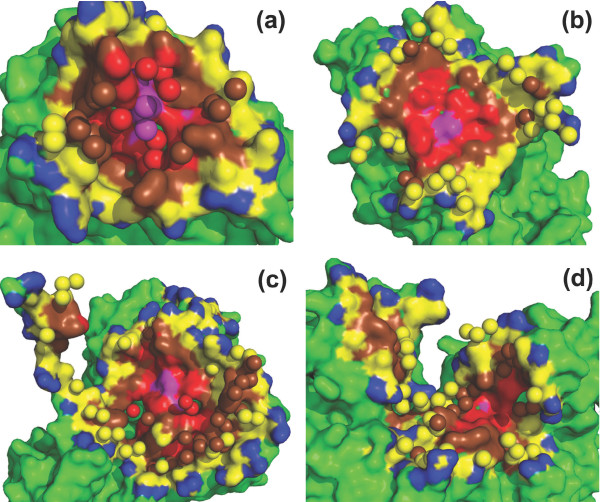Figure 7.
Examples of interfacial water arrangement. A counterexample to the dry-core-wet-rim pattern: (a) a yeast triosephosphate isomerase dimer interface ([PDB:1YPI], resolution: 1.90 Å, wetness: 0.044, rWBL: 1.304, level-wise wetnesses from core to rim, similarly hereinafter: 0.077, 0.072, 0.053 and 0.020) and three cases of dry-core-wet-rim water arrangement patterns: (b) a DTDP-glucose 4,6-dehydratase dimer interface ([PDB:1BXK], resolution: 1.90 Å, wetness: 0.059, rWBL: 0.818, level-wise wetnesses: 0.0, 0.0, 0.046, 0.106), (c) an aspartate aminotransferase dimer interface ([PDB:1AJS], resolution: 1.60 Å, wetness: 0.049, rWBL: 1.034, level-wise wetnesses: 0.0, 0.029, 0.058, 0.066) and, (d) an interface between a protein biosynthesis elongation factor eEF1A and its exchange factor eEF1Balpha ([PDB:1 F60], resolution: 1.67 Å, wetness: 0.070, rWBL: 0.935, level-wise wetnesses: 0.0, 0.0, 0.066, 0.112). One side of the interaction partner is shown in surface, with non-interface part colored green and the nested-rings of interface colored according to burial level: O0, O1, O2, O3 and O4 are colored magenta, red, brown, yellow and blue, respectively. Interfacial water is shown in spheres.

